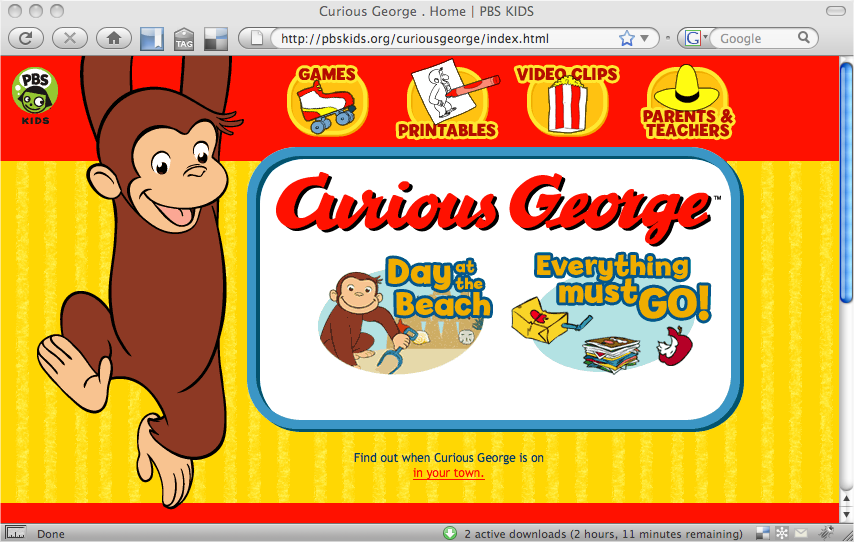Chapter 6. Images
Nobody believes that a picture is worth a thousand words more than today’s web designers, as evidenced by the highly visual nature of the Internet. In fact, it’s not difficult to stumble onto a home page composed almost entirely of graphics, as you can see in Figure 6-1.

Figure 6-1. Some websites rely almost exclusively on graphics for both looks and function. The home page for the Curious George website at http://pbskids.org, for instance, uses graphics not just for pictures of the main character, but also for the page’s background and navigation buttons.
Even if you don’t want to go that far, understanding how to effectively use graphics on a web page is invaluable. Whether you want to plop a simple photo onto your page, cover it with clickable “hotspots,” or design an interactive set of buttons that light up when a cursor passes over them, Dreamweaver makes the job easy.
Adding Images
If you were writing out the HTML instructions for your web page
by hand, you’d insert an image using the image tag: <img>. For
example, the HTML snippet <img
src=“images/george.jpg”> tells a browser to display a
graphic file named george.jpg,
which it can find in the images folder. (An image
tag’s primary property is called the source [src]
property; it indicates the URL or path to the graphics
file.)
Dreamweaver automatically does all the necessary coding for you when you insert a picture ...
Get Dreamweaver CS5.5: The Missing Manual now with the O’Reilly learning platform.
O’Reilly members experience books, live events, courses curated by job role, and more from O’Reilly and nearly 200 top publishers.

